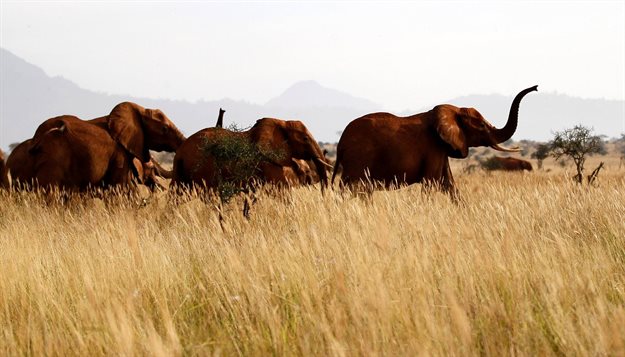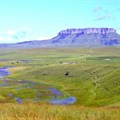Kenya starts its first national wildlife census

It will focus on counting rare species, such as the pangolin which has been identified as a potential intermediary species for Covid-19, and the Sable antelope, of which fewer than 100 remain in Kenya.
Expanding human settlements, a changing climate that makes resources scarcer, and poaching have contributed to declines in wildlife populations. Giraffe populations in Kenya have fallen about 40% over the last three decades, according to the Africa Wildlife Foundation.
The 250 million shilling ($2.3m) project was launched by the Kenya Wildlife Service (KWS) and the tourism ministry at the Shimba Hills National Reserve, the coastal home of Kenya's last population of Sable antelopes.
Some of Kenya's most vulnerable animals, including rhinos and elephants, are counted periodically. But it will be the first time animals are counted systematically in all areas of the country.
Major gaps
"We know there are major gaps. We probably don't know much about what is going on in northern Kenya," said Winnie Kiiru, acting chairperson of the Kenya Wildlife Research Training Institute.
Detailed information about wildlife in northern Kenya's less populated and less visited parks is limited.
The aim is to better understand population sizes and their distribution, to identify threats to animals and suggest conservation strategies.
Tourism accounted for 8.2% of Kenya's GDP in 2019, according to the World Travel and Tourism Council, much of it from visits to nature parks, but has fallen drastically during the Covid-19 pandemic.
The plunge in international travel has also had some benefits. Last year was the first since 1999 in which no rhinos were poached, the KWS said.
Source: Reuters

Reuters, the news and media division of Thomson Reuters, is the world's largest multimedia news provider, reaching billions of people worldwide every day.
Go to: https://www.reuters.com/Related
Rhino poaching continues to decrease 7 Mar 2025 Rhino poachers handed prison sentences 27 Jan 2025 The Last Ranger, a South African short film earns international acclaim, multiple awards 6 Dec 2024 Using radiation to stop the traffic of rhino horns 16 Oct 2024 Using carbon dating to stop elephant and rhino poaching 25 Sep 2024 Care for Wild and Investec: 10 years of conserving SA’s black and white rhino population 23 Sep 2024
























